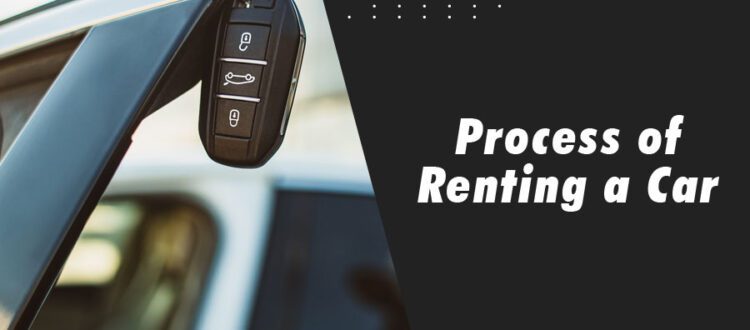Process of Renting a Car
Understanding the rental car process is crucial for a smooth experience. The process of renting a car includes many details, and if you have no prior renting experience, you might miss it. Approaching this unprepared may lead to misunderstandings and cost you more than anticipated.
This guide covers the key steps and terms to consider, from pre-rental preparation to returning the rented vehicle. We will guide you through all the stages, ensuring your car rental journey is hassle-free and enjoyable.
Pre-Rental Preparation
The first step in pre-rental preparation is identifying your rental needs. During this initial stage, we advise those interested in renting a car to consider how much space they need and the occasion or original purpose of renting a vehicle.
One of the critical aspects of identifying rental needs is choosing vehicle categories. The range of vehicle classes a company offers may vary based on capacity. However, you can expect to find the following vehicle classes based on the size and type of automobile: economy, midsized, standard, luxury, and special (electric/hybrid).
Some rental companies can only be oriented toward a single class. For instance, at Fisher Luxury Rental, we offer exotic luxury cars from brands such as Ferrari, Lamborghini, and McLaren. Corvette, and others.
Choosing a rental car company
Choosing a reputable rental car company is crucial during the rental process. You will be asked to sign an agreement contract that lines up your rights and obligations. If you are a first-time renter, we like to emphasize the company that rents the cars is usually in full ownership of the vehicles they offer in their lineup.
While the process of renting a car might be fairly easy, there is still some basic documentation that the company will require. These usually include meeting local age requirements, owning a driver’s license, and other official documentation.
Comparing prices and options
When planning a visit to a new location, you will likely encounter multiple rental companies. Once you’ve identified your vehicle needs, you can inspect the lineup of different companies and compare their prices.
You can do this before arriving on location; reach out to a car rental in advance, and you might arrange a pick-up from the airport. Most rental companies offer flexible options, allowing customers to arrange drop-off or pick-up from multiple places.
Making a reservation
Scheduling a car reservation in advance can ensure that the vehicle you have in mind meets all your needs. While rental services offer a line of vehicles without a prior reservation, the selection might be limited. If you are interested in luxury rental car booking, check out our exotic car selection.

Source: shutterstock.com / Photo Contributor: jd8
Picking Up the Car
After contacting the car rental company and selecting your preferred model, the next step is picking up the car upon arrival. There are some things to consider when picking up the vehicle from the location. Here is what you can expect from this process:
Verifying rental terms and conditions
As we mentioned, rental companies present you with an agreement contract upon arrival. Reviewing the contract ensures you clearly understand the given terms and conditions. We encourage you to read carefully to find your responsibilities and commitments.
Some of the main points that all rental contracts entail include deposit requirements and insurance coverage. Keep in mind these are general observations, and the terms and conditions may vary per company.
Insurance coverage should always be a primary consideration. It protects you in extreme cases, such as car theft and accidents, while the car is in your possession.
Checking for damages and mileage
It’s important to note that you’ll be responsible for any damage the car suffers while it’s in your possession. Before leaving the parking lot, inspecting the car thoroughly and looking for possible damage is important.
During your inspection, ensure you cover the car’s exterior and interior. Remember that the documentation you will sign declares the car was in excellent condition when you acquired it. Taking it for a test run is also a good practice.
Signing the rental agreement
Upon ensuring the rental vehicle is in good condition and all the terms and conditions in the contract are on point, you can sign the agreement and take the car. This is usually when most rental companies will ask for a payment.
However, this might not always be the case, as some rental businesses offer an option to pay online. You will be asked to provide a receipt if you’ve already paid upon reservation.
During the Rental Period
So, what is the process of renting a car at its core? Here, you will find some valuable considerations that will ensure you are well-prepared if certain challenges arise.
Staying within the rental period and mileage restrictions
While most rental car companies may not have mileage restrictions as a standard practice, some rental contracts have limitations. This is why we usually advise customers to keep an open eye when signing the contract.
Companies that have a limit on their mileage issue fees once the daily limit has been reached. Usually, this is a per-mile fee.
Reporting any issues or accidents
While dealing with a car breakdown or, worst-case scenario, being involved in a car crash is the last thing that comes to mind when going on vacation. Yet, it’s still possible. If you’re in an accident, follow the standard procedure of ensuring all involved are okay, after which you can call your insurance company.
Generally, the procedure is the same as having an accident while driving your vehicle. The only difference is that you must also contact the rental company.
Usually, rental companies have their own accident forms that you will have to complete. You must contact your insurance provider to discuss your coverage if the car is damaged.
Returning the Car
So, what is the process of returning a car? Once the time to return the car has come, we suggest you refill the tank and clean up the car before returning the keys. It’s best to choose a gas station close to the drop-off point. It’s also a good idea to plan and decide on your route to ensure you arrive on time.
Usually, arriving later than agreed will likely include some extra fees. Once you arrive at the spot, check all the vehicle compartments to ensure you’ve gathered all of your belongings. Take photos inside and outside the vehicle; these will prove valuable if you face damage charges.
While it’s good driver’s etiquette to return the car as clean as you picked it up, making sure the car’s hygiene is checked will also help avoid extra maintenance charges that the rental company might impose. After ensuring everything we mentioned so far is proper, ask your rental car agent to provide a confirmation receipt that you’ve returned the car in optimal condition.

Source: shutterstock.com / Photo Contributor: Nattawit Khomsanit
Conclusion
Navigating the process of renting a car involves several key steps. During the preparation phase, you should explore the different options within the location you plan to visit. It’s important to decide on the car type you want to rent. Ensure you are comfortable with the overall price, and contact the company to make a reservation.
Also, inspecting the terms and conditions within the agreement you are served when renting a car is crucial. Once you sign this agreement, you must follow its rules; otherwise, you will face additional fees.
Finally, in conclusion to your rental experience, inspecting all hygiene aspects is a good practice. Make sure the vehicle is damage-free before returning it.






